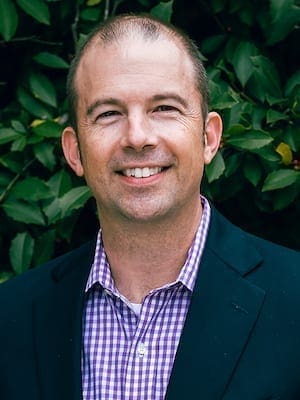Seminaries arose in the last 25 years to combat the return of fundamentalist legalism in congregations and denominations.
Armed with the energy of Baptist resistance and funded by mission and freedom-minded friends, seminaries trained a generation of pastoral leaders like me to love Jesus, preach the Bible, serve the church, stay out of partisanship, protect religious liberty and care for the poor.
Today, seminaries feel six disruptions that affect every religious institution:
1. Declining North American church attendance
Every pollster agrees that people are attending church less often than just a few years ago, and fewer people overall are attending worship.
2. Student debt
The average seminarian begins with $13,000 in student loan debt from college and incurs an average of $20,000 in student loan debt from seminary. Based on the average full-time starting pastor’s or minister’s salary ($30,000 to $40,000), that’s not an equation for fruitful ministry.
3. Student experience
What Amazon did to the bookstore, Liberty University in Lynchburg, Virginia, has done to theological education.
Students want everything delivered directly to them. Bypassing the church, students choose convenience, price and accessibility over quality of theological content.
Seminary training meets them at the intersection of life, ministry and mission.
4. Pastoral calling
Co-vocational ministry is a preferred path to fulfill calling. The gig economy creates plenty of “side hustles” for ministry leaders. Ministers would rather fund their own ministries than deal with the headaches of entrenched churches.
5. Church-based training
Churches train their own staff and have called and commissioned persons to take on pastoral leadership before seminary.
Frustrated with graduates from traditional seminaries who weren’t prepared for work in the church and overwhelmed with the expense and lost time to on-ramp new ministers, congregations have reversed the process. Some even started their own residency programs.
6. Global church growth
From Africa to southeast Asia, the church is growing faster than we can commission trained leaders to educate believers. In North America, the church is growing among first generation speakers of languages other than English.
This perceived upheaval returns seminaries like mine to our roots. In the book ofActs, the church planted the seeds of the “seminarium” (seminary) in the temple and home.
Led by followers of “the Way,” the apostles taught synagogues and neighborhoods to train pastoral leaders.
Churches identified persons like Priscilla as tentmakers and teachers. They trained in an established institution and also deployed their teachers where the Spirit was converting lives.
Priscilla didn’t send Apollos to Asia. She went to Ephesus and set him straight. Timothy trained with Paul as he traveled. The result multiplied the gospel mission.
Using distance learning technology and innovative degree programs, free-standing seminaries like Northern Seminary in Lisle, Illinois, are training a new generation of Phoebes, Junias and Apolloses for 21st century work.
We’re delivering seminary directly to church leaders and equipping them in six ways to engage congregations and their contexts:
1. Flexible affordable degree programs
Today’s seminaries are offering programs that allow persons to stay home and serve within their congregations while learning.
With the help of generous friends and churches, we’re reducing costs to about a monthly car payment and training people how to be good stewards of their resources.
We’re reallocating scholarships to serve women and persons of color who do not have access to the resources of those from wealthy congregations.
2. Proficiency with formation
The value of seminary training has always been spiritual training in communities outside your context. You learn that church is “more than just preaching” and that there are many ways to grow Christ’s church.
But character formation in a diverse classroom alone can’t prepare you for the problems of congregations. We need calm in the storm and competency amid complexity.
Seminaries view the congregation as the best place to assess learning. Like medical doctors, seminaries are working with congregations to provide residencies to train and equip students in context.
We’re also helping churches plant new congregations by training co-vocational pastors for the long haul.
3. Educational justice
Seminaries have returned to the “mission field.” We’ve always been leaders in the healing professions; now we train prisoners and immigrants. We train pastors in Christian community development to renew communities and reconcile people to Christ.
Look for increased emphasis on Latino graduate theological education for persons without baccalaureate degrees.
4. Marketplace learning
Because of the decline of church attendance, business persons are now accepting their calling in the workplace. Pastors are trained to affirm the vocation of business, nonprofit and public sector workers alongside the trained clergy.
5. Efficient college and graduate partnerships
For students who are called to church ministry in high school or college, seminaries partner with undergraduate degree programs to combine ministry degrees with graduate education.
Avoiding redundancy, students are able to matriculate sooner with less debt in five to six years.
6. On-demand content
Do you like your Netflix account? Soon, you’ll be able to receive content on a subscription basis from seminaries. Instead of coming to a conference, curated content will come to you.
There will always be a need for in-person teaching in a residential seminary, but the time spent in person will be devoted to the kinds of experiences necessary for a life of ministry.
Seminaries who are engaged in this kind of work receive fewer complaints from graduates and churches that say, “They didn’t teach me this in seminary.”
The “seminarium” moves from being a garden for transplants to a gymnasium for a mental, spiritual and congregational workout.
By returning to our roots, we serve church leaders wherever the Spirit sends them and multiplying the impact of our core mission: to transform believers by the renewing of the mind.
Editor’s note: This article is part of a series this week focused on trends and issues in theological education. Previous articles in the series are:
Churches, Pastors Can Access Tailored Theological Education | David Bronkema
Why We Must Rethink Theological Education in Time of Flux | Lina Toth


